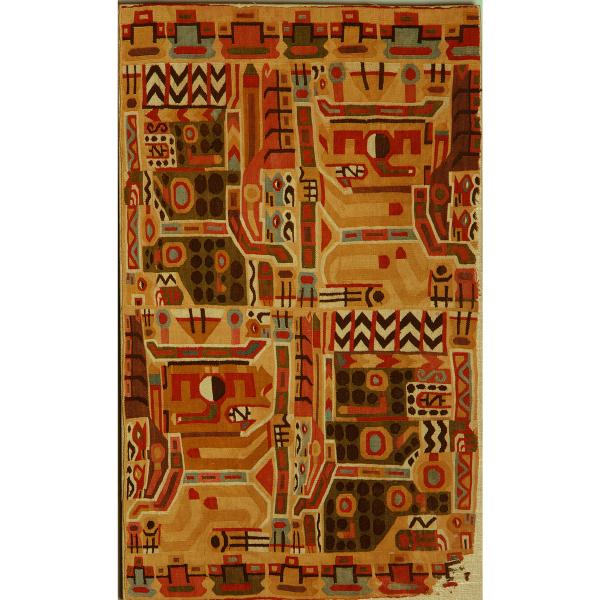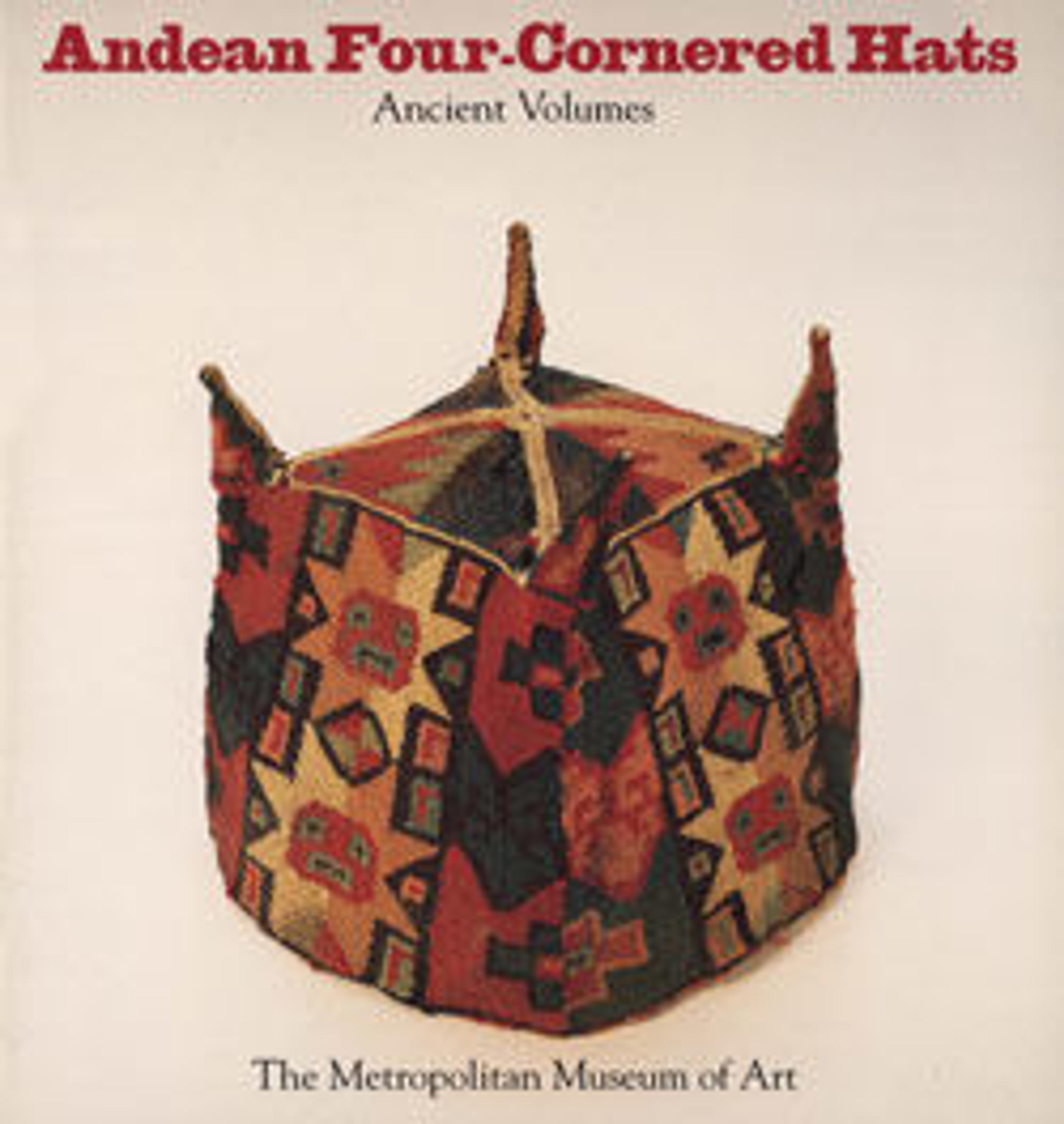Tunic Fragment
Artwork Details
- Title: Tunic Fragment
- Date: 7th–9th century
- Geography: Peru
- Culture: Wari
- Medium: Camelid hair, cotton
- Dimensions: H. 12 7/8 x W. 21in. (32.7 x 53.3cm)
- Classification: Textiles-Woven
- Credit Line: The Michael C. Rockefeller Memorial Collection, Bequest of Nelson A. Rockefeller, 1979
- Object Number: 1979.206.394
- Curatorial Department: The Michael C. Rockefeller Wing
Audio

1651. Andean Textiles
Nilda Callañuapa Álvarez and Arabel Fernández López
NILDA CALLAÑAUPA ALVAREZ: For me, living and producing textiles goes along with your life, along with your age, along with your everyday activity, that's why it is living art, it’s not a piece that's from the past.
I am Nilda Callañuapa Álvarez, I am from Chinchero, I am a weaver, spinner, natural dyer, knitter. Today, I am the director and one of the founders of the center for traditional textiles of Cusco.
JOSÉ MARÍA YAZPIK (NARRATOR): Andean textile traditions represent 10,000 years of astounding creation and innovation, evidenced by their rich variety of techniques and forms and their encoded cultural meanings. Weavers and their patrons imbued garments with markers of identity and social meaning.
ARABEL FERNÁNDEZ LÓPEZ: My name is Arabel Fernández López. I am a Peruvian archaeologist, a specialist in Andean textiles.
Textile represent the social scheme of this society when they establish their difference inside and outside their social group. Each textile is a document that not only tell us about the person who made it, but also about the person who wore it.
JOSÉ MARÍA YAZPIK: For Nilda Callañaupa Álvarez, textiles are both part of her heritage and a living art.
NILDA CALLAÑAUPA ALVAREZ: We, the Andean people have inherited from pre-Inca times, the techniques of how to make clothes.
You should be able to be recognized by the type of clothing and textiles you are doing. It’s your cultural identity, where you come from, your origins. If you are single, probably have done different style of textile. When you have children, you might have them with different purpose, different quality. When you get older, then you produce another type of textiles.
JOSÉ MARÍA YAZPIK: Textiles are vibrant, tactile connections to people, communities, and ideas. They are the threads that bind together past and present.
NILDA CALLAÑAUPA ALVAREZ: It stays with the family as a living spirit, accompanying the family. A textile from my mother, for example, it means a lot. It brings me memories, it tells me histories, it's like holding the spirit of my mother through the textiles.
More Artwork
Research Resources
The Met provides unparalleled resources for research and welcomes an international community of students and scholars. The Met's Open Access API is where creators and researchers can connect to the The Met collection. Open Access data and public domain images are available for unrestricted commercial and noncommercial use without permission or fee.
To request images under copyright and other restrictions, please use this Image Request form.
Feedback
We continue to research and examine historical and cultural context for objects in The Met collection. If you have comments or questions about this object record, please contact us using the form below. The Museum looks forward to receiving your comments.
